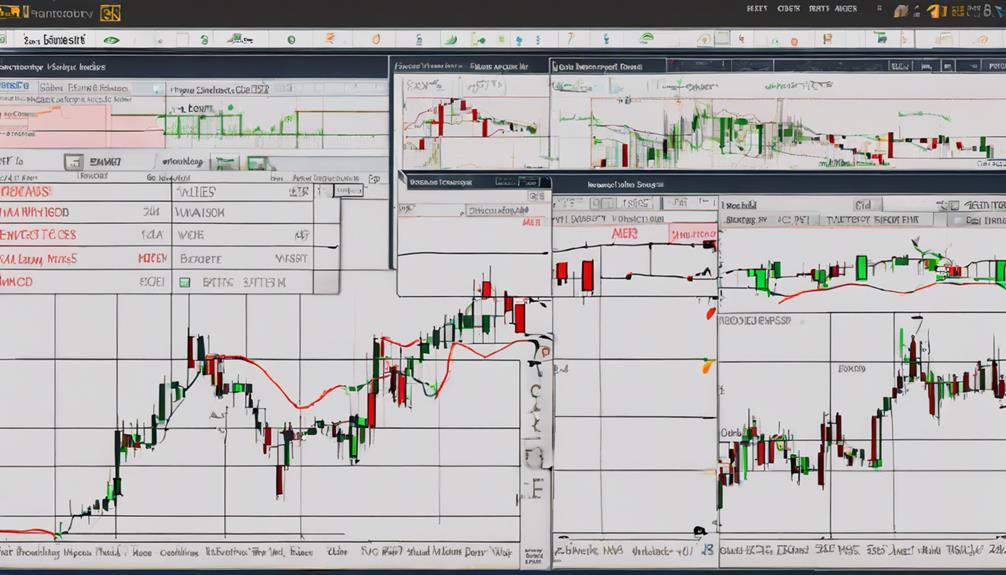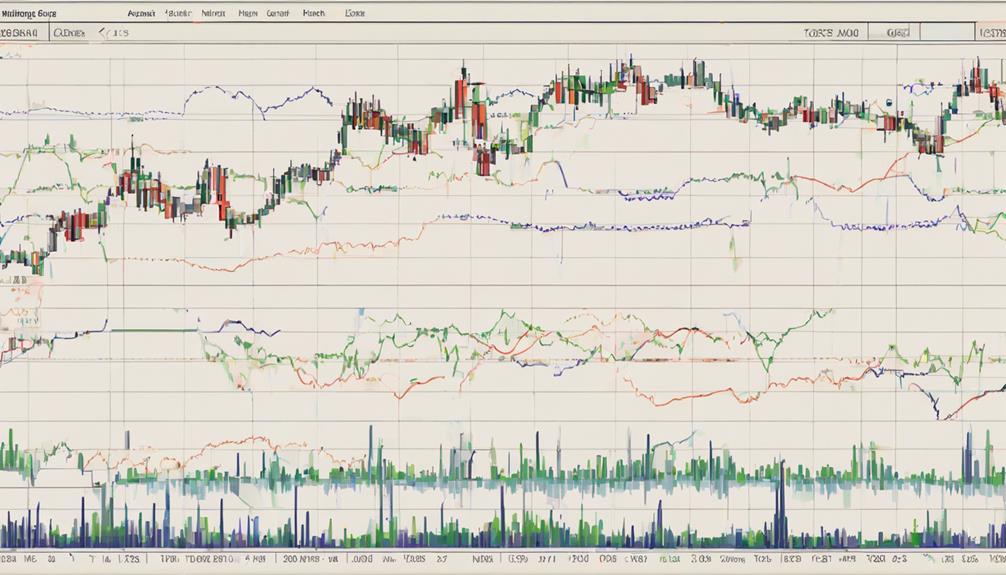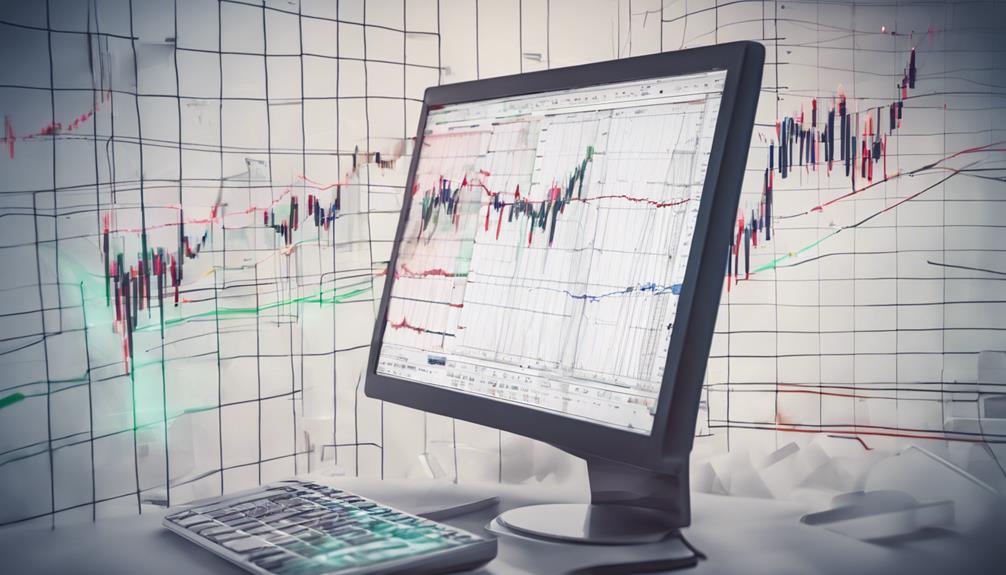When exploring technical indicators, starting with a clear understanding of their purpose and functionality is key. Each indicator serves a unique role in analyzing market trends and making informed trading decisions.
However, beyond mere recognition, knowing how to effectively interpret and utilize these indicators is where the real challenge lies. By mastering the essential tips for introducing technical indicators, you can unlock a world of potential for enhancing your trading strategies and maximizing profitability.
Understanding Technical Indicators
What role do technical indicators play in analyzing market behavior and guiding trading decisions?
Technical indicators, such as trend-following or momentum indicators, provide traders with valuable information derived from historical price, volume, or open interest data. By analyzing these indicators, traders can identify trends, confirm price movements, and anticipate potential reversals in the market.
For example, trend indicators help traders spot the direction of the market, while momentum indicators gauge the strength of price movements. Additionally, support and resistance indicators assist in identifying key price levels where the market is likely to pause or reverse.
Understanding how to interpret and apply these technical indicators is crucial for making informed trading decisions and developing successful trading strategies.
Importance of Technical Analysis Tools

Technical analysis tools are essential for traders seeking to analyze historical price data and make well-informed decisions in the market. These tools help identify trends, patterns, and potential entry/exit points, providing insights into price movements and aiding in predicting future directions.
Common technical indicators like RSI, MACD, and moving averages offer valuable analysis capabilities. By understanding and utilizing these tools effectively, traders can enhance their trading strategies and decision-making processes.
Incorporating technical analysis into your trading approach can provide a structured framework for interpreting market dynamics and making informed choices based on data-driven insights. Stay tuned to learn more about selecting the right indicators for your trading style.
Choosing the Right Indicator

To effectively choose the right indicator for your trading strategy, consider aligning your selection with specific trading goals and market conditions. When selecting an indicator, focus on trend identification, momentum analysis, or volume confirmation.
Take into account the market conditions and choose indicators like RSI for overbought/oversold signals or MACD for trend confirmation. Evaluate the accuracy and reliability of the indicator in various market scenarios to ensure informed decision-making.
Experiment with different indicators to find the best fit for your trading style and strategy. Combining multiple indicators can provide a more comprehensive analysis, balancing aspects such as trend, momentum, and volume.
Interpreting Indicator Signals

When assessing indicator signals in technical analysis, traders must carefully interpret the data to anticipate potential market shifts and price movements. Key indicators like RSI, MACD, and stochastic oscillator provide insights into overbought/oversold conditions, divergence patterns, and trend confirmation. By understanding these signals, traders can make informed trading decisions based on market dynamics.
It's crucial to consider how different indicators interact and validate each other to gain a comprehensive view of the market. Interpreting indicator signals is a critical aspect of technical analysis, enabling traders to gauge sentiment shifts, potential price changes, and trend reversals. By mastering the art of interpreting these signals, traders can enhance their ability to navigate the complexities of the financial markets effectively.
Implementing Indicators in Trading

Implementing indicators in trading requires a strategic selection process based on your trading strategy and objectives. To effectively use technical indicators, consider the following tips:
- Understand the purpose: Know how each indicator works and complements your analysis.
- Backtest indicators: Evaluate their performance in historical market conditions.
- Combine indicators: Use multiple indicators for stronger trading signals and confirmation.
- Adjust settings: Regularly review and optimize indicator settings for dynamic markets.
What Are the Key Technical Indicators to Focus on for Beginners?
When it comes to using technical indicators introduction, beginners should focus on key indicators like moving averages, RSI, and MACD. These can help in analyzing market trends, identifying potential entry and exit points, and making informed trading decisions. It’s important to understand how to interpret and use these indicators effectively.
Frequently Asked Questions
What Is the Basic Introduction to Technical Analysis?
To understand technical analysis, you study historical price data to predict future market movements. By analyzing charts and indicators, like moving averages and RSI, traders make informed decisions based on trends and entry/exit points.
What Are the Basics of Technical Indicators?
To understand technical indicators, you must see them as tools like a compass guiding a ship. They are calculations from past data helping you analyze trends, momentum, and make informed trading decisions for chart analysis.
What Is the Importance of Technical Indicators?
Understanding technical indicators is crucial for traders. They assist in analyzing price data, identifying market trends, and predicting price movements. By utilizing indicators effectively, you can enhance your trading strategies, improve timing, and make informed investment decisions.
What Are the Top 5 Technical Analysis Indicators?
The top 5 technical analysis indicators are Moving Average Convergence Divergence (MACD), Relative Strength Index (RSI), Bollinger Bands, Stochastic Oscillator, and Fibonacci Retracement. They help identify trends, overbought/oversold conditions, volatility, price breakouts, and potential reversals.
Conclusion
As you navigate the seas of trading, remember that technical indicators are your compass, guiding you through the unpredictable waters of the market.
Just as a skilled sailor relies on the stars to reach their destination, a savvy trader relies on indicators to make informed decisions.
Keep honing your skills, adjusting your course when needed, and soon you'll be charting a successful course towards your financial goals.
Fair winds and following seas, trader.


